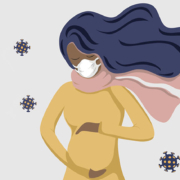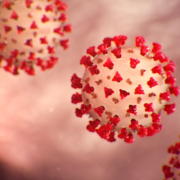Poorly Circulated Room Air Raises Potential Exposure to Contaminants by up to 6 Times
Berkeley Lab experiments quantify the effects of overhead heating on room air mixing with implications for COVID-safe meetings and classrooms. Having good room ventilation to dilute and disperse indoor air pollutants has long been recognized, and with the COVID-19 pandemic its importance has become all the more heightened. But new experiments by indoor air researchers at Lawrence Berkeley National Laboratory (Berkeley Lab) show that certain circumstances will result in poor mixing of room air, meaning airborne contaminants may not be effectively dispersed and removed by building level ventilation.
Using CO2 as a tracer to track small respiratory aerosols that travel with air currents in a room, the Berkeley Lab team found that when overhead vents (or diffusers) are supplying heated air, it created thermally stratified conditions that block the flow of clean air down to the “breathing zone” in the middle height of the room. As a result, even when people are sitting more than 6 feet from each other, some occupants may be exposed to respiratory aerosols from others at a rate 5 to 6 times higher than if the same room were well mixed.
Their study, “Measured influence of overhead HVAC on exposure to airborne contaminants from simulated speaking in a meeting and a classroom,” was published recently in the journal Indoor Air.
Release date: 22 September 2021
Source: DOE/Lawrence Berkeley National Laboratory









